Stepping into the world of flower gardening is like embarking on a journey that promises beauty, tranquility, and a touch of magic right in your backyard. Whether you’re a novice gardener curious about where to begin or a seasoned green thumb looking to refine your techniques, starting a flower garden from scratch offers a rewarding opportunity to create a personal haven filled with vibrant colors and delightful fragrances.
The importance of cultivating your own flower garden extends beyond aesthetics; it nurtures the soul and invites a sense of accomplishment as you witness your efforts bloom into reality. In this article, we’ll guide you through the foundational steps of planning and planting, share insightful tips for selecting the right flowers for your climate, and provide practical advice on nurturing your garden to thrive throughout the seasons.
From choosing the perfect spot to understanding soil health and plant compatibility, you’ll gain the confidence to transform a blank canvas of earth into a lively tapestry of floral wonders. As we delve into the art and science of flower gardening, you’ll discover new techniques, learn how to troubleshoot common issues, and find inspiration to make your garden a true reflection of your personal style. Together, let’s embark on this enriching journey to cultivate not just a garden, but a lifelong passion for growing beauty in all its forms.
Select an Ideal Garden Location
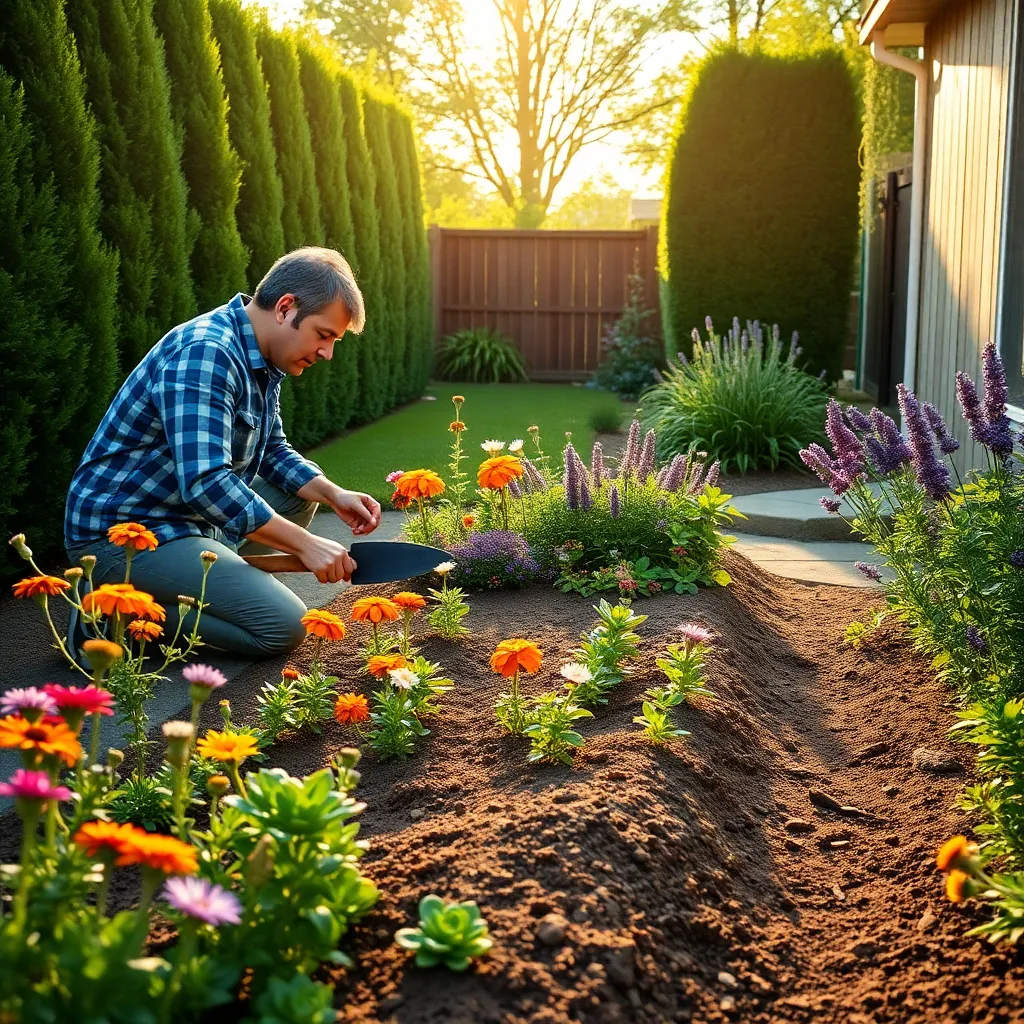
Choosing the right location for your flower garden is crucial for success. Consider sunlight exposure, as most flowering plants require at least six hours of direct sunlight each day to thrive.
It’s important to evaluate the soil quality in your chosen area. Perform a simple soil test to determine pH levels and nutrient content, ensuring your plants have the best foundation for growth.
Begin by observing the natural drainage patterns of your garden space. Avoid areas where water tends to pool after rain, as good drainage is essential for preventing root rot and plant diseases.
For beginners, select a location that is easily accessible for regular maintenance. This will encourage consistent care, such as weeding and watering, which are vital for a vibrant garden.
Advanced gardeners might consider the microclimates within their garden. Areas near structures or under trees might offer unique growing environments that can be leveraged for specific plant types.
Once your location is selected, take note of any existing plants or structures that could affect your garden. Ensure there’s enough space for your flowers to grow without competing for resources, promoting healthier plants overall.
Test and Improve Soil Quality
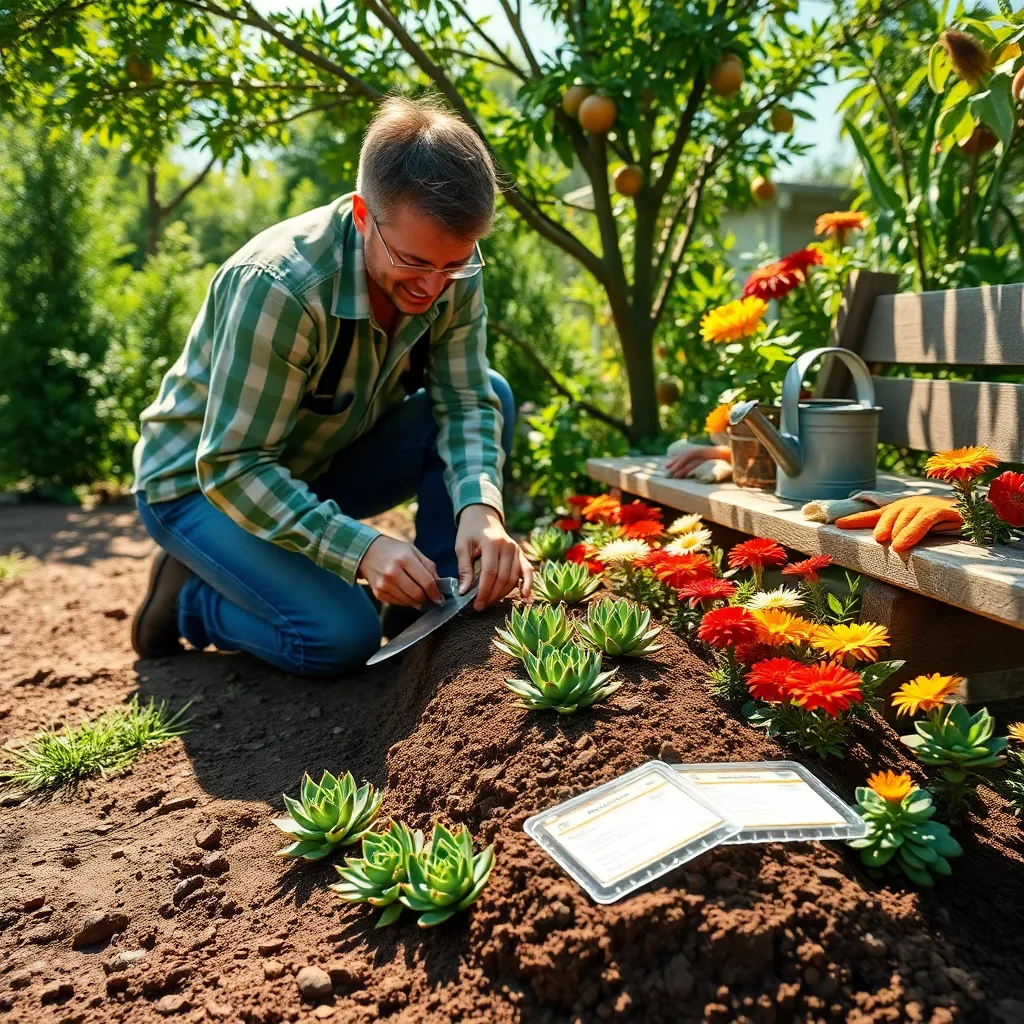
Testing your soil is a crucial first step in ensuring your flower garden thrives. Begin by purchasing a simple soil test kit from a garden center, which will provide you with essential information about the pH and nutrient levels of your soil.
Once you have your results, you can take specific actions to improve your soil’s quality. If your soil is too acidic, consider adding lime to increase the pH; conversely, sulfur can be added to reduce the pH if the soil is too alkaline.
To enhance nutrient content, incorporate organic matter such as compost or well-rotted manure into your soil. This not only enriches the soil with essential nutrients but also improves its structure, aiding drainage and root penetration.
For gardeners aiming for perfection, conducting a more comprehensive soil analysis through a local extension service can be beneficial. This detailed report will provide tailored recommendations on fertilizers and amendments specific to your soil’s needs, ensuring your flowers get the best possible start.
Plan Your Flower Layout
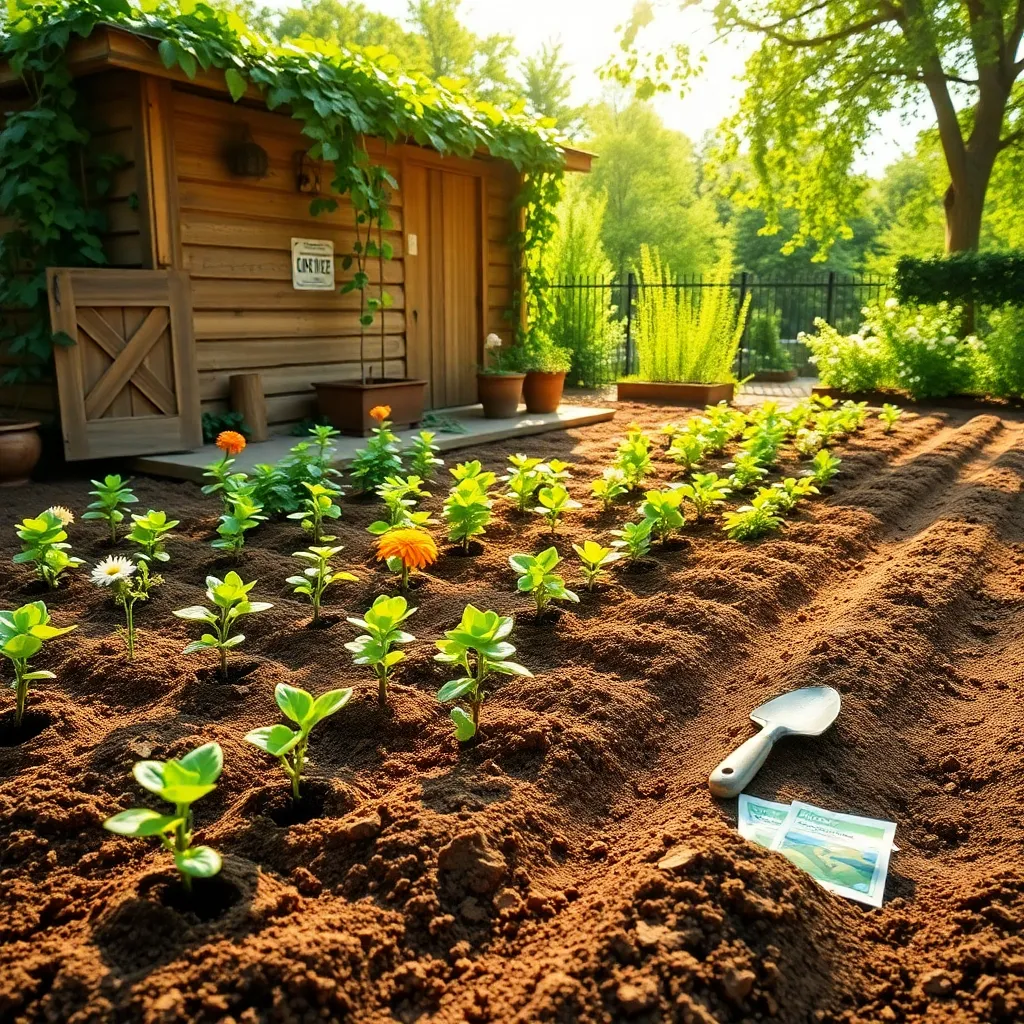
Before laying out your flower garden, consider the sunlight exposure each area of your garden receives. Most flowering plants thrive with at least six hours of direct sunlight, but there are also many beautiful varieties that prefer shade.
To create a balanced and visually appealing garden, mix plant heights by placing taller plants at the back or center and shorter ones at the edges. This tiered approach not only enhances visual interest but also ensures that all plants receive adequate sunlight.
Group plants with similar watering and soil requirements together to make maintenance easier and more efficient. For instance, drought-tolerant plants like lavender and yarrow pair well with each other and require less frequent watering.
When planning your layout, consider the blooming times of different flowers to ensure continuous color throughout the growing season. By selecting a mix of early, mid, and late-season bloomers, you can enjoy a vibrant garden from spring through fall.
Plant Seeds or Seedlings
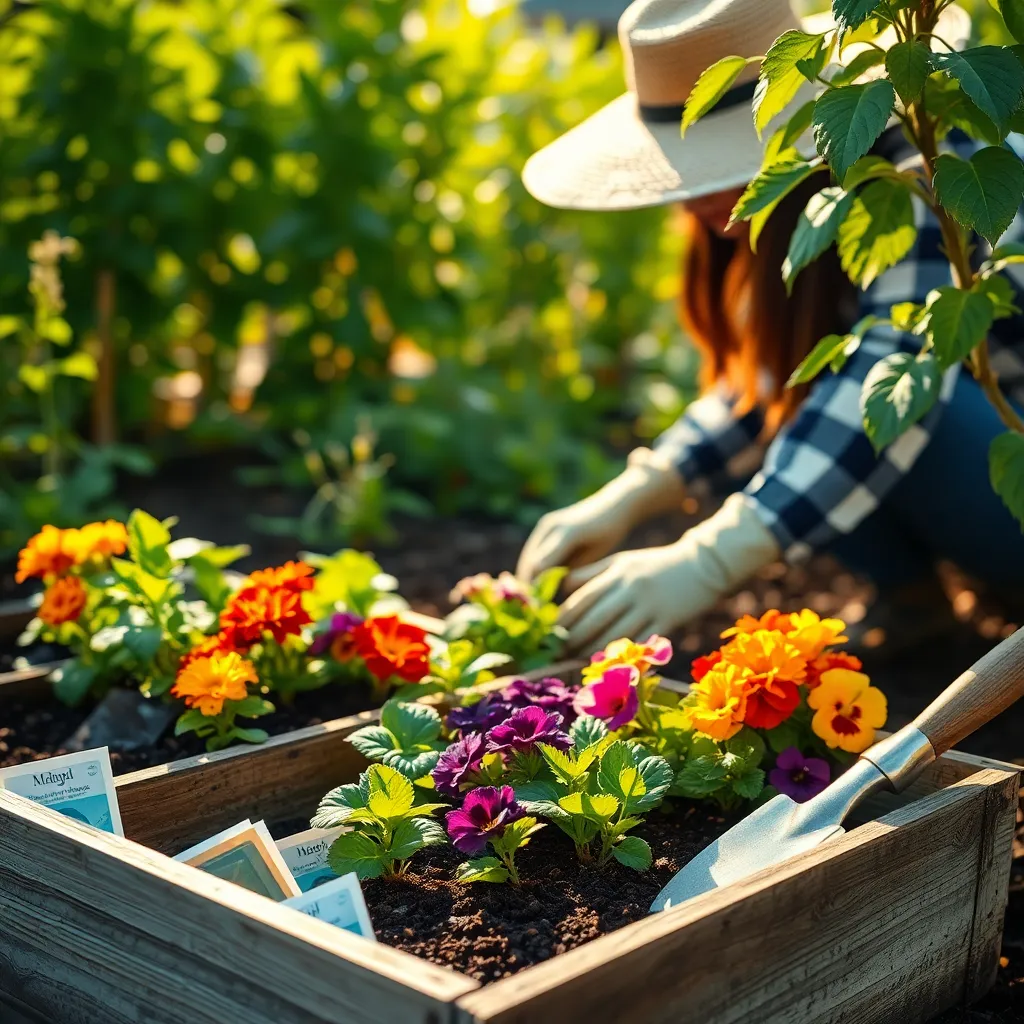
When deciding between seeds and seedlings, consider the time and effort you’re willing to invest. Seeds are typically more economical, but they require patience and consistent care to germinate successfully.
Starting with seedlings, on the other hand, offers a head start and is often less risky. For beginners, purchasing healthy seedlings from a local nursery can simplify the process and ensure a vibrant garden sooner.
To plant seeds, ensure you have the appropriate soil mix—light and well-draining soils are ideal for most flowers. Regular watering is crucial for seeds, but avoid waterlogging by allowing the surface to dry out slightly between waterings.
Experienced gardeners might enjoy the challenge of starting flowers like lupines or delphiniums from seeds, which require specific conditions. Stratifying seeds, or exposing them to a period of cold, can be necessary to simulate winter conditions and improve germination rates.
For those opting for seedlings, take care to acclimate them to outdoor conditions gradually. Known as hardening off, this process involves exposing seedlings to outdoor conditions for a few hours a day over a week, protecting their delicate structures from shock.
Whether planting seeds or seedlings, ensure the location matches the plant’s sun and soil requirements. Group plants with similar needs together to streamline care and maximize growth potential, creating a thriving, cohesive garden environment.
Maintain with Water and Mulch
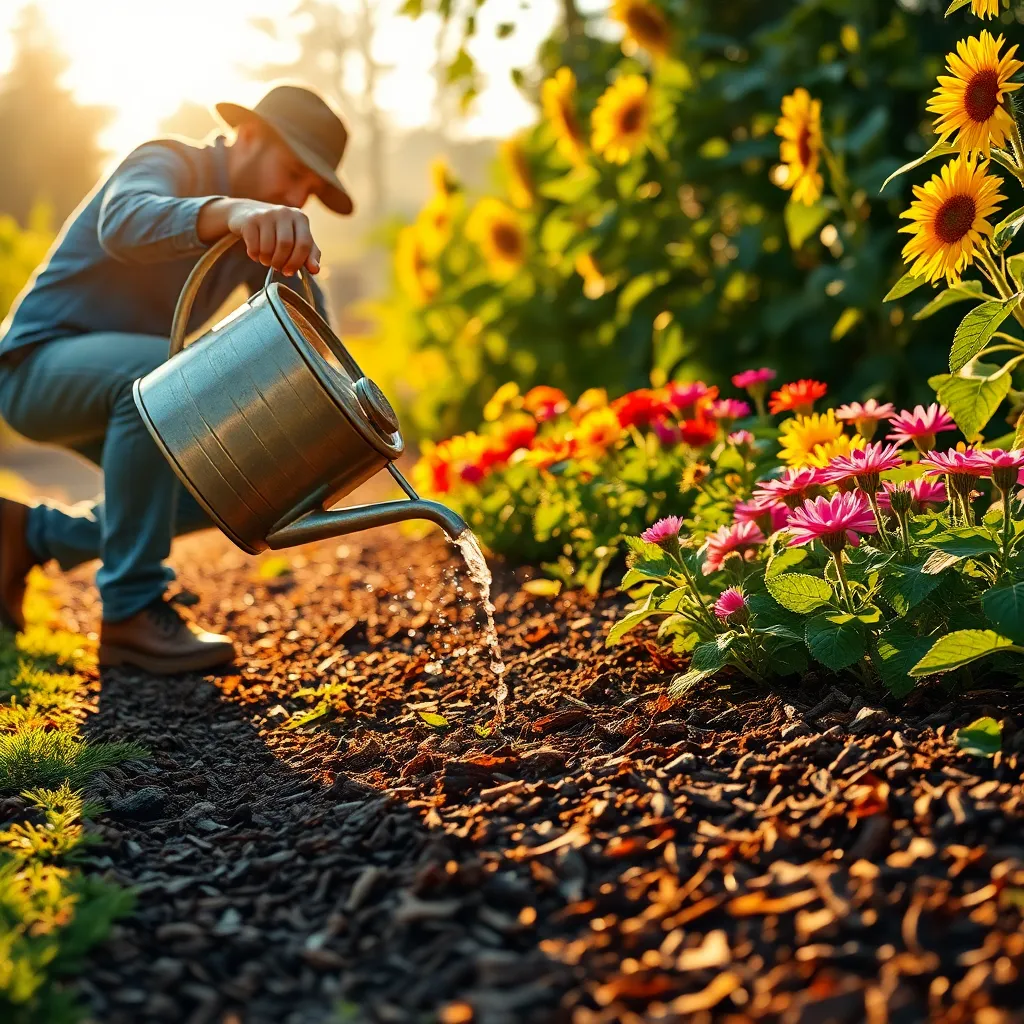
After planting your seeds or seedlings, the next crucial step is to ensure they receive the right amount of water. Watering your flower garden properly is key to healthy plant growth; aim to water deeply but infrequently to encourage strong root systems.
To determine when to water, check the soil moisture by inserting your finger about an inch into the soil. If it feels dry at this depth, it’s time to water, ensuring that the water reaches the root zone.
Using mulch around your plants can help conserve moisture and reduce the frequency of watering. Organic mulches like straw, shredded bark, or compost are excellent choices that also enrich the soil as they decompose.
Apply a layer of mulch about 2 to 3 inches thick, keeping it a few inches away from the stems of your plants to prevent rot. This practice not only retains moisture but also helps suppress weeds, giving your flowers more room to thrive.
For advanced gardeners, consider using drip irrigation systems to deliver water directly to the roots, maximizing efficiency and minimizing evaporation. These systems can be automated, ensuring consistent watering even when you’re away, thus maintaining optimal plant health.
Conclusion: Growing Success with These Plants
In nurturing a flower garden from scratch, we uncover profound insights that parallel the nurturing of our relationships. First, we learn the importance of preparing the soil—laying a strong foundation built on trust and open communication. Next, selecting the right seeds reminds us to be intentional in our relationship choices, aligning with shared values. Third, providing consistent care and attention mirrors the necessity of nurturing love and understanding daily. Fourth, weeding out the unnecessary reflects the need to address conflicts and clear misunderstandings promptly. Lastly, the patience required to see your garden bloom teaches us that relationships, like gardens, flourish over time with dedication and patience.
As an actionable next step, spend a few moments today identifying one area in your relationship that could benefit from a bit more nurturing, and take a small step towards improvement. Whether it’s a heartfelt conversation or a simple gesture of kindness, your relationship garden will thrive with consistent care.
Be sure to save or bookmark this guide as a handy reference in your relationship journey. Remember, by applying these gardening principles, your relationship can blossom into a resilient and vibrant partnership. Here’s to nurturing love that grows beautifully through every season!

